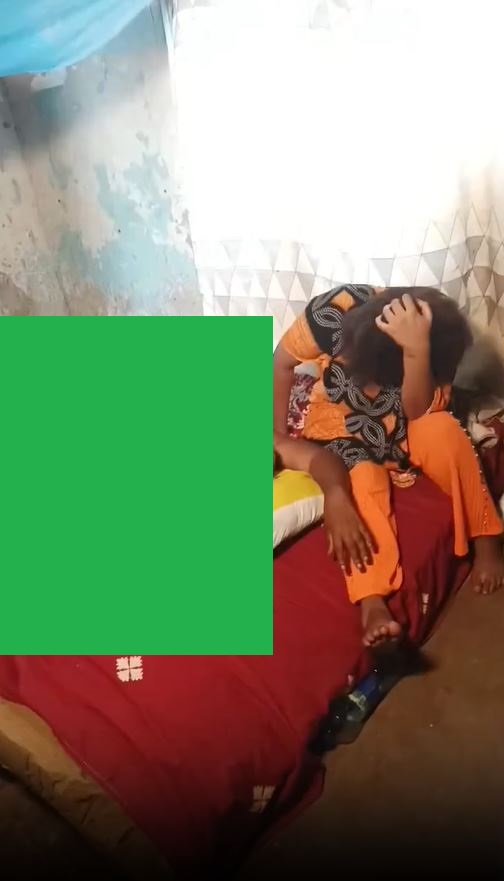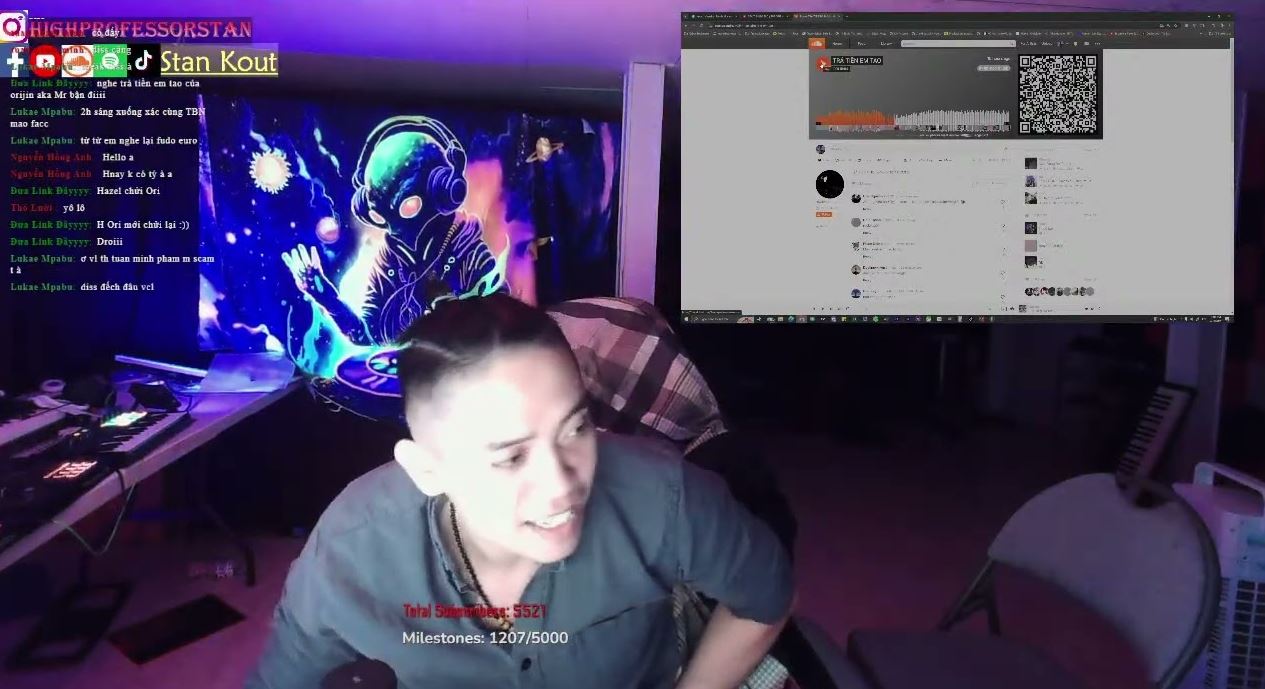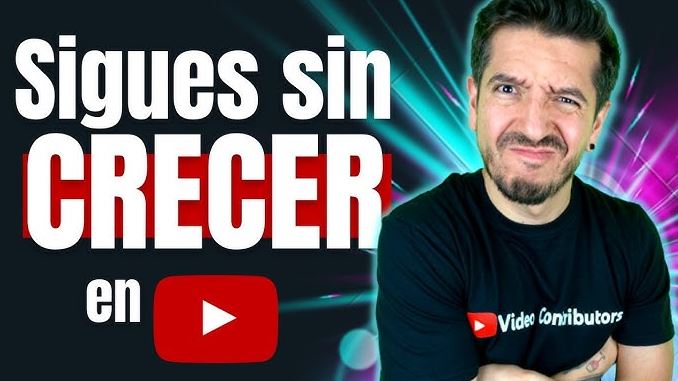Tienen Video Navigating the Challenges of Digital Privacy and Personal Video Security
In the era of digital communication, the proliferation of personal videos across various platforms has been exponential. While these videos can be a form of expression and connection, they also pose significant privacy risks when shared without consent. The term “Tienen Video” has recently gained attention in this context, highlighting a growing concern over the security of personal multimedia content.
The digital age has brought about unparalleled access to information and the ability to share content globally at the click of a button. However, this ease of access can also lead to significant privacy breaches, particularly with personal videos. The impact of such incidents is not just limited to emotional distress but can extend to severe reputational damage and even legal complications. Therefore, understanding and implementing privacy and security measures is crucial to protect individuals in our increasingly digital world.
Content
Understanding ‘Tienen Video’
“Tienen Video” refers to instances where personal videos are leaked or shared without the owner’s consent. This term encompasses a variety of scenarios, including but not limited to, hacking, revenge posting, or accidental sharing. It serves as a stark reminder of the vulnerabilities that exist within our personal digital repositories. “Tienen Video” has become synonymous with the call for greater awareness and stronger security measures around personal multimedia content.

The origin of “Tienen Video” can be traced back to specific high-profile incidents where personal videos of celebrities or public figures were maliciously exposed online. These events not only garnered significant media attention but also prompted a public discourse on the need for stricter data protection laws and better personal security practices. Over time, “Tienen Video” has evolved into a broader term used by digital rights advocates to highlight the ongoing issues surrounding video privacy and the consequences of digital content misuse.
The popularization of the term has been fueled by increasing incidents of video leaks across various demographics, not just celebrities. As more people fall victim to such privacy invasions, “Tienen Video” has become a rallying cry for those advocating for digital rights and stricter enforcement of privacy laws. Social media campaigns and public discussions have also played a crucial role in spreading awareness about the risks associated with personal video sharing and the importance of safeguarding digital content.
Impact of Leaked Personal Videos
The leakage of personal videos can have devastating psychological impacts on victims. Experiencing such a breach of privacy often results in anxiety, depression, and a significant loss of self-esteem. Victims may feel violated and experience long-term emotional distress, a state that can lead to social withdrawal and acute mental health challenges. The personal nature of these videos makes the invasion feel deeply personal, often leaving scars that take much longer to heal than the immediate social or legal repercussions.
Tienen Video Exclusive 1080p HD Hot and Glamorous
Socially, the consequences of video leaks can be equally severe. Victims often face stigma and judgment from peers and society, which can lead to isolation and a damaged social reputation. In cases involving young adults or teenagers, this can affect educational opportunities and personal development. Adults may face similar ostracism in professional and personal circles, proving that the social fallout can transcend various aspects of one’s life, undermining relationships and ongoing social interactions.
Legally, the implications of leaking personal videos vary by jurisdiction but often involve severe penalties for those found guilty of distributing such content without consent. Laws are increasingly being updated to better address the nuances of digital content distribution, including revenge porn laws, which specifically address the unauthorized sharing of intimate images. However, the legal process can be lengthy and emotionally taxing for victims, who must often relive their trauma in the pursuit of justice. Moreover, the global nature of the internet poses significant challenges in prosecuting offenders across different legal frameworks.
Common Methods of Video Leaking
Hacking is a primary method through which personal videos are accessed and leaked. Cybercriminals often target personal storage devices and cloud storage services that lack robust security measures. By exploiting vulnerabilities in software and hardware, hackers can gain unauthorized access to personal data, including videos that are presumed private. This method of attack underscores the critical importance of implementing advanced security protocols like two-factor authentication and using secure passwords.

Social engineering is another common technique used to facilitate video leaks. This method involves manipulating individuals into divulging confidential information that grants access to their personal data. Phishing emails, pretexting, baiting, and other deceitful strategies are employed to trick victims into handing over access credentials or installing malware on their devices. The human factor often becomes the weakest link in the security chain, making social engineering a particularly effective method of data theft.
Finally, insider threats are a significant risk when it comes to the leaking of personal videos. These threats come from individuals who have legitimate access to personal or organizational data, such as friends, family members, coworkers, or IT staff, who misuse their access rights. Whether motivated by malice, revenge, or financial gain, insiders can easily exploit their access to leak videos without needing to bypass external security measures. Such breaches can be particularly difficult to prevent and detect, making it imperative to have robust data access policies and monitoring in place.
Case Studies
The term “Tienen Video” encompasses several high-profile cases that have shocked the public and highlighted severe privacy breaches. One notorious incident involved a celebrity whose personal videos were hacked and leaked online, leading to widespread media coverage and public outcry. Another case involved a university scandal where students’ private videos were distributed on social media without their consent, sparking a national debate on campus safety and digital privacy.
Investigations into these incidents often reveal a mix of poor personal security practices and sophisticated hacking techniques. For example, in the celebrity case, the leak was traced back to a phishing attack that allowed hackers to access personal data stored on a cloud service. In the university case, the breach was linked to an insider who had access to the students’ personal devices and intentionally leaked the videos to harm the victims.
The response to these leaks typically involves multiple stakeholders, including law enforcement, cybersecurity experts, and legal advisors. Authorities often launch full investigations to track down the perpetrators, while the affected parties may take legal action against those responsible. Additionally, these incidents prompt a review of privacy policies and security measures at institutional levels, such as universities or companies, to prevent future breaches.
Preventive Measures
To protect against video leaks, individuals should adopt robust digital security practices. This includes using strong, unique passwords for all accounts and enabling two-factor authentication where available. It’s also advisable to regularly update software and operating systems to patch any security vulnerabilities. Furthermore, sensitive videos should be stored in encrypted formats and on devices that do not connect to the internet when not necessary.

Several tools and software can help secure personal videos. For encryption, programs like VeraCrypt provide robust encryption options for storing files securely. For secure file storage, cloud services with strong security protocols, such as end-to-end encryption, are recommended. Antivirus and anti-malware software are essential for defending against malware that could be used to access personal files.
Educating oneself about digital security is crucial. Many organizations offer free resources and tutorials that teach best practices for digital privacy and security. Websites like the Electronic Frontier Foundation (EFF) provide guidelines on how to protect personal data. Additionally, attending webinars and workshops on cybersecurity can be incredibly beneficial for those looking to deepen their understanding of how to protect themselves online.
Legal Framework and Protections
Across various jurisdictions, laws have been enacted to protect individuals from unauthorized sharing and leaking of personal videos. These laws often categorize such acts under cybercrimes or violations of privacy rights. For instance, in the United States, laws like the Video Voyeurism Prevention Act specifically prohibit the capturing or distribution of private videos without consent. Similar laws exist in the European Union, guided by the General Data Protection Regulation (GDPR), which offers robust protections against data breaches, including personal videos.
Individuals whose videos have been leaked possess certain rights under these laws. They have the right to seek damages, pursue criminal charges against the perpetrators, and demand the removal of their videos from any platform where they were posted without consent. Additionally, some regions allow victims to claim compensation for emotional distress and other psychological impacts of the breach.
To seek legal recourse, victims should first file a report with local law enforcement or cybercrime units. It’s essential to provide all available evidence, including the leaked videos and any information about how the leak may have occurred. Consulting with an attorney specialized in cyber law can also provide guidance through the legal process. Victims can also contact websites or platforms hosting the content to demand its immediate removal under applicable laws.
The Role of Social Media Platforms
Social media platforms play a pivotal role in the management of leaked content. Major platforms like Facebook, Twitter, and YouTube have strict policies against non-consensual content. These platforms often have reporting mechanisms that allow users to flag inappropriate content, which is then reviewed and potentially removed if it violates the platform’s guidelines. They also collaborate with law enforcement to handle cases of video leakage when necessary.
Social media platforms utilize a combination of automated technology and human review to detect and manage leaked videos. Technologies such as image and video matching tools can identify known instances of non-consensual content and prevent their re-upload. AI algorithms also monitor for unusual upload patterns or potentially violative content, which are then escalated to human moderators for review.
The responsibility of social media platforms in handling leaked videos is significant. While they must protect the privacy and rights of users, they also need to ensure freedom of expression and avoid censorship. This balancing act is complex and requires constant updates to policies and technologies. Platforms are accountable not only to their users but also to regulators who may impose fines or sanctions for failing to adequately protect user data or remove harmful content quickly.
Future Trends in Digital Privacy
As digital technology advances, so too do the methods for protecting privacy. Emerging technologies like blockchain and artificial intelligence (AI) are set to revolutionize how personal videos are secured. Blockchain offers a decentralized security model, which can potentially eliminate single points of failure, making unauthorized access significantly more difficult. Meanwhile, AI can enhance threat detection systems, identifying and neutralizing privacy breaches more swiftly than ever before.
Looking ahead, personal video security is likely to become more integrated with biometric verification technologies, such as facial recognition and fingerprint authentication. These technologies could ensure that only authorized viewers can access certain content, adding an extra layer of privacy protection. Furthermore, as more people become aware of privacy issues, demand for more secure communication platforms that offer end-to-end encryption for video sharing is expected to rise.
The future of digital privacy also hinges on finding the right balance between protecting individual privacy and embracing technological advancements. This balance is crucial to fostering innovation while ensuring that privacy standards evolve in tandem to safeguard against new vulnerabilities brought about by technological developments.
This article has explored the significant risks associated with leaked personal videos and the various methods through which leaks can occur. It has also highlighted the legal frameworks designed to protect victims of such breaches and the critical role of social media platforms in managing leaked content. Importantly, the discussion underscored the need for individuals to adopt robust security practices to safeguard their personal videos.
The importance of safeguarding personal videos cannot be overstated. In an age where digital content can be shared globally in seconds, protecting personal videos is not just about maintaining privacy; it’s about preserving dignity and personal safety. As digital platforms continue to evolve, so must our strategies for protecting sensitive content.
To ensure a safer digital future, it is imperative that individuals, platforms, and policymakers work together to enhance the security measures protecting personal videos. There is a need for ongoing education on digital privacy risks and the tools available to mitigate these risks. Additionally, advocating for stronger privacy laws and better enforcement of existing regulations will be crucial in maintaining the integrity of our digital interactions.
Breaking News -Aya Nakamura Video Leak Sparks Debate on Celebrity Privacy and Digital Security
Die Militante Veganerin Video Shaking Up the Vegan Movement with Bold Activism
Hareem Shah Video Leak Scandal A Deep Dive into Privacy Breaches and Digital Ethics
Overtime Megan Video Leak A Comprehensive Analysis of Privacy Breaches and Digital Security Measures
Julzzess Video Leak Sparks Important Discussions on Digital Privacy and Celebrity Culture
Taliya and Gustavo Video Leak Exploring the Implications for Privacy and Digital Ethics
Madisyn Shipman Video Leak A Comprehensive Analysis of Privacy Breaches in Celebrity Digital Lives